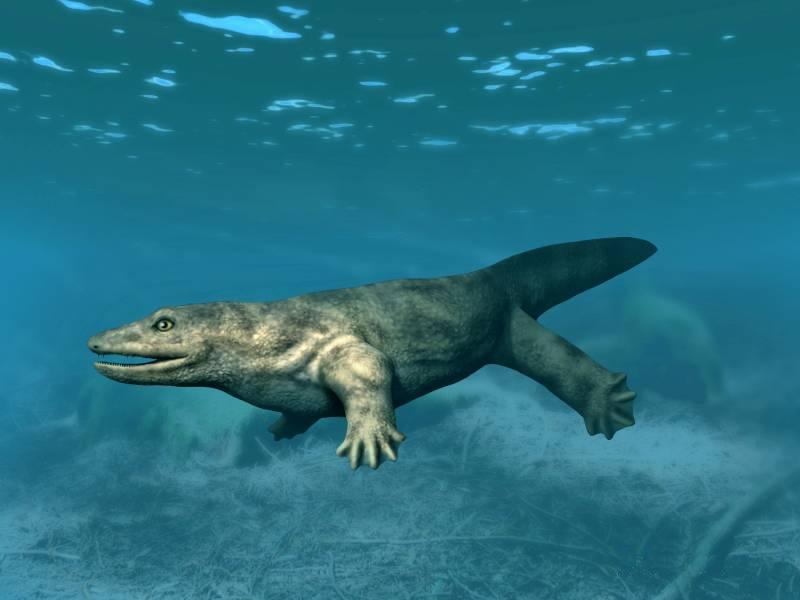They say that children grow up so fast… that’s truer for some classes of animals than others. Some, like birds and mammals—including humans—grow quickly when young, and then stop when they reach their adult size. Others, including many reptiles and amphibians, grow steadily throughout their lives. Whether an animal follows one pattern or the other is easy enough to determine for animals alive today. But what about extinct animals, especially those that lived even before the dinosaurs?
Whatcheeria lived about 340 million years ago, and looked like a giant salamander but is what’s called a “stem tetrapod,” a four-legged animal that’s part of the lineage from which today’s four-legged animals evolved. Scientists were able to study Whatcheeria fossils to learn how it grew. Animals create new layers of bone whenever they grow, so scientists were able to track Whatcheeria growth patterns by looking at slices of bone from individuals ranging from juveniles to adults under a microscope. They expected Whatcheeria to follow the reptile and amphibian pattern. But instead, they found that these tetrapods did most of their growing when young like we do.
Is one way better than the other? One consideration is that front-loading your growth takes a large initial input of food and resources. Growing steadily can be easier, since you only need enough food to grow a little bit at a time. On the other hand, it might be helpful to grow as quickly as possible to become a top predator or protect yourself from other predators as soon as possible. Growing up fast isn’t all that bad.










